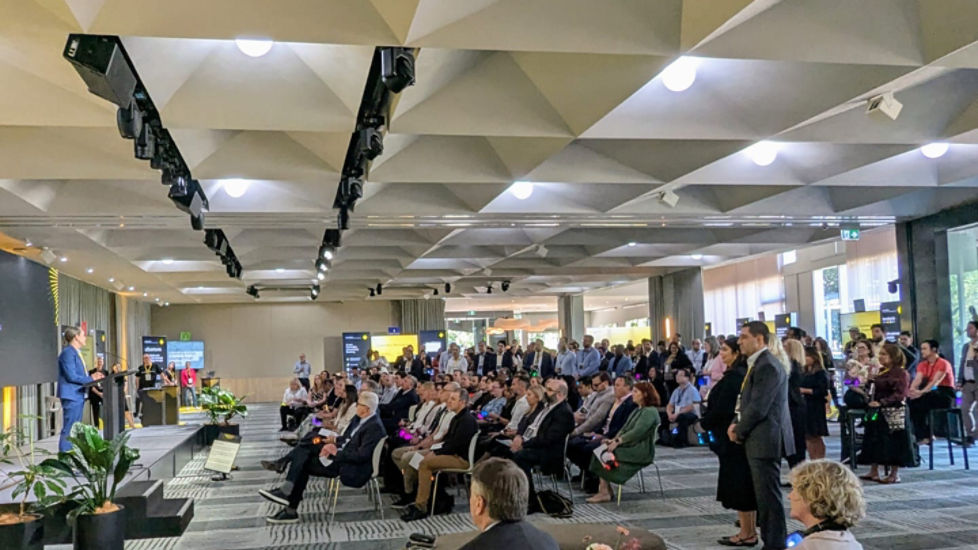While many consumers are choosing lower emissions vehicles, Australian businesses are set to continue playing an outsized role in EV adoption. According to new research , 40% of companies expect to use EVs or hybrids in the next 6-12 months, up from 14.7% today2. Looking beyond the next year, that’s projected to more than double again.
Chris Moldrich, CommBank General Manager, Asset Finance, says actual and intended EV adoption trends show an acceleration in business use that’s already far outstripped earlier expectations. However, gaining critical mass will rely on a range of factors, from accessible charging stations to higher engagement with incentives like subsidies and rebates.
“While more public sector investment in charging infrastructure is needed, particularly in regional locations, EV usage is surging as the market matures and becomes more affordable. That’s helped by government concessions and an expanding choice of vehicles beyond luxury models,” Moldrich says.
“For businesses, we are seeing an equal focus on environmental sustainability and costs. For the latter, rising interest rates and expenses are among the top considerations when purchasing a vehicle.”
“Meanwhile, there’s still low overall awareness of government and other perks that can reduce the upfront EV purchasing price.”
Smaller businesses lead the charge, for now
Micro and small businesses have been the fastest to use EVs, edging out their larger counterparts. The research shows that between 16-17% of micro and small businesses already use EVs or hybrid models, compared to 13.4% among commercial and corporate firms.3
Smaller businesses are expected to maintain this lead over the next 6-12 months, but larger businesses anticipate they will eventually overtake their smaller peers.
Moldrich says that employee-led uptake will likely play an even greater role in business EV adoption, with people drawn to novated leases that benefit from federal government waivers of fringe benefits tax (FBT). He notes that benefits employers too.
“However, the research confirms also that just 30% of all businesses are aware of the fringe benefits tax exemptions, and even fewer know about state government incentives such as stamp duty waivers or rebates.”
These concessions can vary for consumers and businesses and offer a range of savings. This includes Queensland’s Zero Emission Vehicle Rebate Scheme, where new EVs attract a $6,000 rebate to New South Wales waiving stamp duty on electric light commercial vehicles. Reduced or zero registration costs are also not uncommon.
For larger businesses, there are a range of factors to consider that, once resolved, can pave the way for the introduction of larger EV fleets. Moldrich says fleet purchases are gaining momentum, but businesses must weigh supplying power on-premises or turning to fast-charge stations with added employee downtime.
“By default, many businesses are being asked to become experts in new areas and to run the numbers on how to run a fleet of EVs most effectively. This will change as more investment is directed towards charging infrastructure and battery technology advancements bring down charging times,” Moldrich says.
What to consider when investing in EVs
Do your due diligence: Understand the possible expected life of an EV before purchasing and get guidance on future values. This can help select the right time to procure an EV and avoid being left with assets depreciating faster than expected .
Budget for electricity usage: Assess the projected electricity use required to charge the vehicle, which can be compared against fuel expenses when weighing the total overall running costs.
Model the mileage: Evaluate the distance your vehicles travel daily, weekly, and annually. This will inform the suitability of EVs compared to other vehicle types based on range. Don’t forget to consider travel to and from work, driving style, and conditions. Both can impact capacity and power consumption.
Ask for insights: Before purchasing, request research and insights from your fleet or purchasing partners like SG Fleet to help you compare and contrast existing petrol or diesel vehicles against EVs. Make sure to account for the rebates on offer, whether there are discounted cost of financing options and lifetime cost savings.
Look at the whole package: If you’re deciding how to replace a fleet with EVs, consider whether you will source power from the grid or use on-site solar generation or battery capture technology. Looking at this holistically can help better determine power cost savings and the economics of adoption.
What’s on offer?
Federal
Under the current law, some EV’s provided as a car benefit to employees (e.g. under a novated lease arrangement) do not attract Fringe Benefits Tax (FBT). To be exempt from FBT, the EV must be first held (e.g. purchased) or used on or after 1 July 2022. The purchase price (excluding stamp duty, registration, CTP, any extended warranty costs, financing costs or service plan costs) must also be less than the Luxury Car Tax threshold for fuel efficient vehicles ($89,332 for the 2023-24 financial year).4 You should consult your accountant, tax advisor or the ATO to learn more about how this FBT exemption practically applies to specific vehicle financing arrangements, including novated leases.
New South Wales
The NSW Government are offering $3,000 rebates for the first 25,000 new full-battery EVs and hydrogen fuel cell electric vehicles, purchased for a dutiable value of less than $68,750 registered after September 2021. As of August 2023, almost 8,000 rebates have been paid out.5
Businesses may also be eligible for the rebate for up to two vehicles purchased for commercial usage in NSW, if they have less than 10 vehicles registered in NSW at the time of registration and haven’t claimed a rebate for vehicles in another state.
Eligible new and used electric light vehicles purchased for under $78,000 are exempt from stamp duty. That exemption is applied automatically from 15 August 2022, and for eligible vehicles registered between 1 September 2021 and 14 August 2022, buyers may be eligible to claim back the stamp duty paid.6
Many electric and low emission petrol-electric hybrid vehicles are eligible for a concession on motor vehicle tax, which is automatically applied upon registration.7
Victoria
Victorian-registered zero and Low Emission Vehicles (ZLEV), as opposed to conventional hybrids, are eligible for discounted road-user charges.
ZLEVs in Victoria are also eligible for an annual registration discount of $100 per year, with a maximum discount of $500 over five years.8
They’re also charged a stamp duty flat rate of $8.40 per $200 of market value, instead of the usual luxury vehicle rate of $10.40 per $200 for passenger cars with a value of between $76,951 - $100,000, and $14.00 for vehicles worth between $100,001 and $150,000.
Queensland
The Zero Emission Vehicle Rebate Scheme means eligible individuals and businesses who have purchased a new Zero Emission Vehicle (ZEV) can claim up to a $6,000 rebate.9
Zero Emission vehicles in Queensland attract a registration duty of $1,137, compared to $1,241 for an internal combustion engine vehicle. They also attract lower registration fees, $283.50 versus $360.60 for internal combustion engine vehicles.10
They also are subject to lower stamp duty rates than traditional vehicles. The duty for EVs is $2 for each $100 up to $100,000, compared to $3.50 per $100 for a 5 or 6-cylinder car.11
Western Australia
Western Australia’s Zero Emission Vehicle (ZEV) Rebate Scheme provides a rebate of $3,500 for eligible new vehicles, notably those fully powered by batteries or hydrogen fuel cells, with a maximum dutiable value of $70,000 or less.12 The rebate is available for 10,000 eligible vehicles licensed in WA, or until 10 May 2025.
Electric vehicles used as taxis or ride-shares are exempt from WA’s 10% on-demand transport levy.13
South Australia
The SA Government is providing a $3,000 subsidy and a 3-year registration exemption for eligible new battery electric and hydrogen fuel cell vehicles valued below $68,750.14
As of June 30 2023, there are 5,900 EV subsidies worth $3,000 each for cars worth up to $68,750.
Tasmania
Electric vehicles used for rental purposes are eligible for two years of free registration.15
Australian Capital Territory
Garaged Zero Emissions Vehicles purchased in the ACT before 30 June 2024 are eligible for two years of free registration until 30 June 2024.16
New or used ZEVs, new plug-in hybrid vehicles, and hybrid vehicles are also exempt from stamp duty.17
The ACT government also offers interest free loans ($2,000 - $15,000) for the purchase of ZEVs, over up to 10-year terms.18
Northern Territory
Motorists are eligible for free registration for new and existing plug-in electric vehicles (PEVs), and stamp duty concessions of up to $1,500 (for vehicles valued up to $50,000) until 30 June 2027.19
Under the Electric Vehicle Charger Scheme, grants of up to $2,500 are available for businesses and $1,000 for households to buy and install an electric vehicle charger.20
Looking ahead
It’s not just increased awareness of government incentives that will help, but also access to financing options that reward green purchases. For example, CommBank offers a discounted rate for green vehicle and equipment purchases.
“We expect to see broader application of EV technology across the market. However, there are also other fuel types that offer great promise, including hydrogen-powered engines. This is where we can overcome any heavy haulage issues that may restrict the use of EVs for longer distance freight movement,” Moldrich says.




